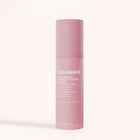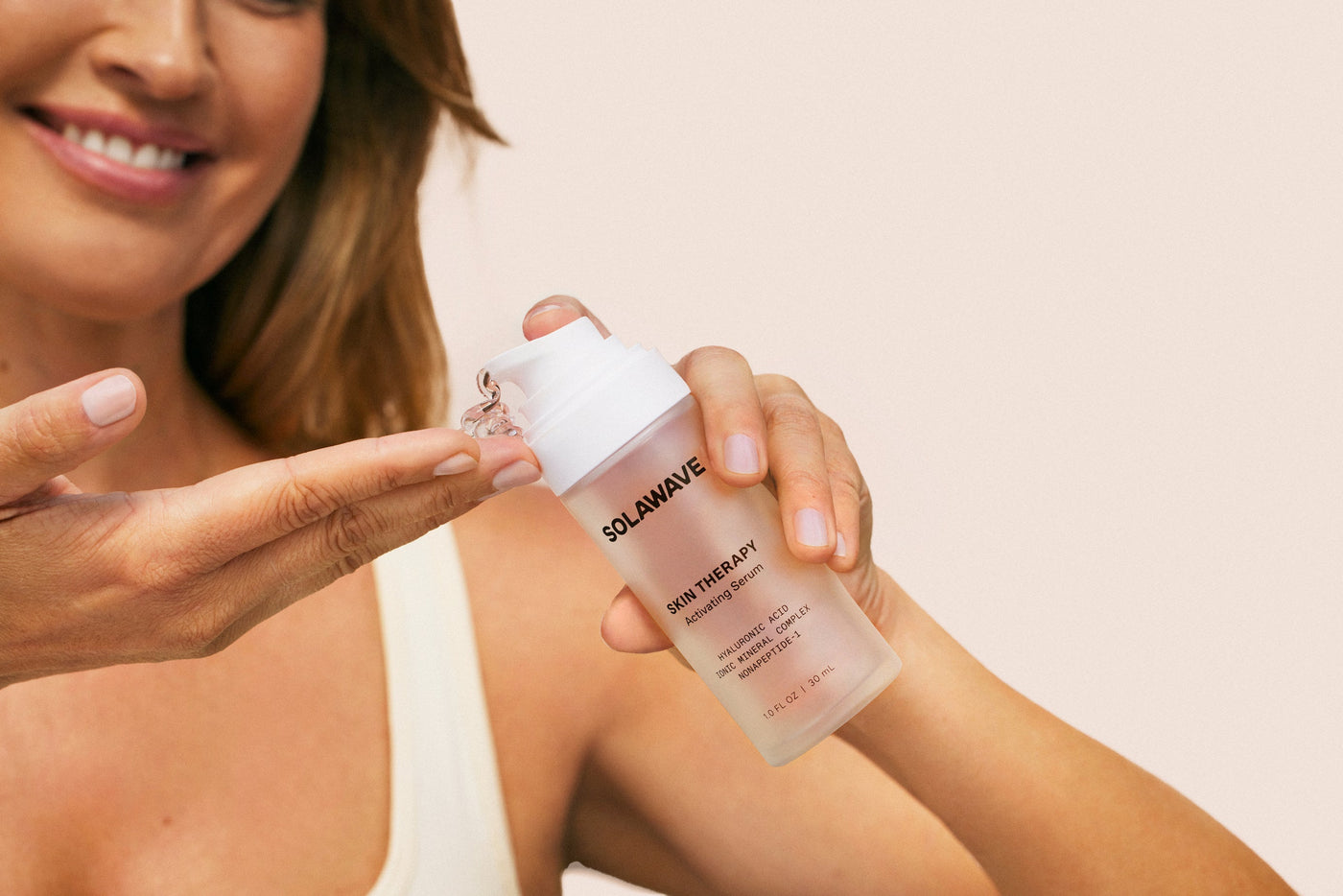

Flexible Masks vs Hard Shell LED Masks: Which Is Right for You?
Reviewed by RasShahn Johnson-Baker
LED Light Therapy masks have emerged as a revolutionary tool, offering a range of benefits from reducing the appearance of fine lines to visibly rejuvenating skin. However, with various options available, selecting the right type of LED mask can make or break whether or not you achieve your skin goals.
Let's go over some of the differences you'll find between different types of masks, including flexible masks and hard shell LED masks, so you know just what to look for as you browse for your perfect fit.
Flexible Masks vs Hard Shell LED Masks
Since this is specifically what you searched for, let's start here and go a little deeper into the different mask materials you're likely to see while you browse.
Flexible Masks
When it comes to flexible LED masks, these masks are designed to fit snugly against your skin, so the choice of material can make all the difference.
One common material you might encounter is flexible plastic, which offers a lightweight feel. Flexible plastic, often made from materials like thermoplastic elastomers (TPE) or polyurethane, is known for its lightweight and pliable nature. These materials combine the elasticity of rubber with the processing benefits of plastics, allowing them to be molded into various shapes.
While flexible plastic masks can be effective, they might not conform to your face as seamlessly as medical-grade silicone (which we'll talk more about below), potentially affecting comfort and fit.
Beyond LED masks, flexible plastics are widely used in consumer goods such as phone cases, flexible tubing, and some footwear. In the medical field, TPEs are utilized for items like medical tubing, though they are generally chosen for applications requiring less intimate skin contact compared to silicone. This makes flexible plastic a less ideal choice for those prioritizing comfort and adaptability in their skincare routine.
Here at Solawave, we use medical-grade silicone for our flexible LED masks. This material is renowned for its softness and comfort, and it provides a gentle touch that adapts seamlessly to the contours of your face. Its durability ensures that your mask will withstand regular use while remaining easy to clean, so you get both hygiene and longevity in one material.
Medical-grade silicone is a staple in both the medical and skincare industries, celebrated for its hypoallergenic properties that make it suitable for even the most sensitive skin types. This material is commonly found in medical devices, such as implants and catheters, as well as in baby products like pacifiers and bottle nipples, underscoring its safety and reliability. Its widespread use in these sensitive applications highlights its trustworthiness and the peace of mind it offers to users seeking a safe and effective skincare solution.
Ultimately, medical-grade silicone stands out for its combination of comfort, safety, and adaptability, which is why it's our choice of flexible LED mask materials.
Hard Shell LED Masks
Hard shell LED masks are typically constructed from materials like acrylonitrile butadiene styrene (ABS) plastic or polycarbonate. These materials are chosen for their rigidity and durability, providing a stable structure that ensures consistent light exposure during use.
ABS plastic is a common thermoplastic polymer known for its strength and impact resistance. It's composed of three monomers: acrylonitrile, butadiene, and styrene, which together create a material that is both tough and lightweight. ABS is widely used in various applications, including automotive parts, consumer electronics housings, and even LEGO bricks, due to its ability to withstand physical stress and maintain its shape.
Polycarbonate, another material used in hard shell masks, is a highly durable and transparent thermoplastic. It's known for its exceptional impact resistance and is often used in applications requiring clear, strong materials, such as eyewear lenses, bulletproof glass, and compact discs. Its robustness makes it an ideal choice for products that need to endure regular handling and environmental exposure.
These materials provide hard shell LED masks with the structural integrity needed for effective Light Therapy, though they may lack the comfort and adaptability of flexible options.
What Are the Other Differences Between Brands of LED Masks?
Aside from materials, there are a few other factors that will distinguish the best masks from the not-so-promising ones.
Let's start with the types of Light Therapy a mask uses. Many brands stick to just Red Light, which is great for tackling fine lines. But if you're looking to maximize the number and breadth of benefits you get from each skincare session, consider brands that mix in other types of Light Therapy or even combine technologies like Galvanic Current with Red Light. This combo can really elevate your skincare game.
For example, if you have acne-prone skin, a device that combines both Red and Blue Light wavelengths will help you tackle the redness and inflammation caused by acne while also simultaneously destroying acne-causing bacteria. If you're looking to specifically tackle signs of skin aging, Red and Near-Infrared LED lights are an anti-aging powerhouse duo that address fine lines, wrinkles, and dullness by supporting healthy collagen production.
Ease of use is another factor. Some masks need to be plugged in, which can be a hassle if you're on the move. Others come with solid battery life, giving you the freedom to use them wherever you like.
And then there's Light Therapy treatment time. Some masks ask for a 20-minute commitment, while others get the job done in just 10 or even 3 minutes.
Finally, look for devices that are FDA-cleared. In short, FDA clearance helps guarantee the safety and effectiveness of your device, and can bring some peace of mind to your purchase by offering a stamp of approval from a government regulatory agency. (You can learn more about Red Light Therapy and FDA clearance here!).
All of these factors can make a huge difference in how often you actually use the mask — are you really going to take 20 minutes out of your day a few times per week to just sit there plugged into the wall in a mask that's not comfy for you? Think about what fits best into your routine. After all, the best mask is the one you'll actually use regularly!
The Best Flexible LED Masks
When it comes to finding the best flexible LED masks, we're proud to offer different options based on your specific treatment goals. Below, we'll talk about an option for a full-face mask, eye mask, and even a neck and chest mask!
Our Wrinkle Retreat Face Mask Kit includes our full-face Light Therapy mask, which combines the power of Red Light Therapy and Near-Infrared Light Therapy to reduce the appearance of fine lines and wrinkles throughout your face while also visibly rejuvenating your skin. Treatment time for your entire face is just 10 minutes, just a few times per week, and treatment fits seamlessly into your regular skincare routine right after cleansing and before applying your other products.
The exception to having a clean and dry face is the included LightBoost Face & Neck Serum, which boosts the effects of Light Therapy, hence why you'll want to apply this topical before your treatment session. This serum is also made with multi-peptides and vegan collagen so you both boost your results while also delivering nourishing ingredients to your skin!
For those who want to focus on the delicate eye area where signs of aging tend to appear first, the Eye Recovery Pro Kit is a must-have. This kit features our Light Therapy eye specialized mask that combines Red Light, Deep Red Light, Amber Light, and Near-Infrared Light to target signs of skin aging like crow's feet and 11s, visibly reduce puffiness, and visually even out skin tone. Paired with the included LightBoost Eye Cream, this kit provides our most powerful concentration of Light Therapy yet!
Don't forget that LED masks aren't just for the face. Our Neck & Chest Rejuvenating Kit extends the benefits of Red Light and Near-Infrared Light Therapy to the often-overlooked areas of the neck, chest, and decollete. This kit helps reduce the appearance of fine lines and promotes a lifted, toned look, making it an essential addition to your skincare arsenal!
Conclusion
In summary, choosing the right LED mask comes down to a lot of factors, including what material the mask is made from.
Flexible masks, particularly those made from medical-grade silicone, offer unparalleled comfort and adaptability, ensuring a snug fit that maximizes the benefits of Light Therapy. While hard shell masks provide stability, the flexibility and comfort of silicone make it the superior choice for most users.
While we shared some of our favorite masks above, there are still other non-mask options, like our 4-in-1 Skincare Wand, which may be the right fit for you.
If you're looking for a little more tailored help deciding which is right for you, take our Device Quiz here for recommendations specific to your skincare goals!
Happy masking!
Sources:
-
Thermoplastic Elastomer - an overview | ScienceDirect Topics
-
Silicone-based biomaterials for biomedical applications - Wiley Library
-
Acrylonitrile Butadiene Styrene - an overview | ScienceDirect Topics














